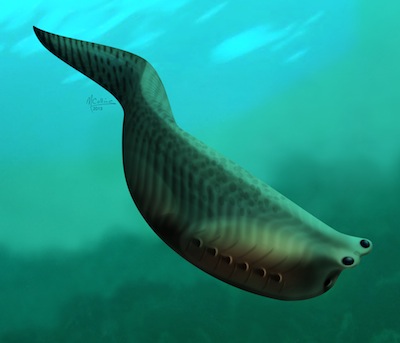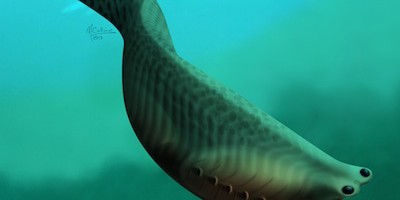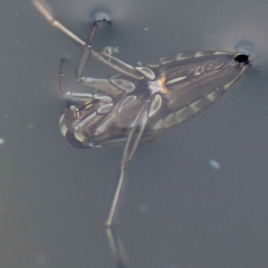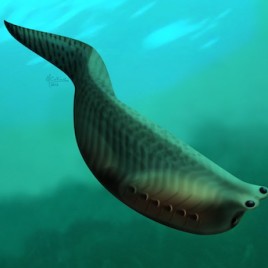
Artist’s impression of Metaspriggina walcottii, a primitive fish that lived about 500 million years ago. A new set of well-preserved fossils suggests that the species provides some of the earliest evidence of the structures that would one day become jaws. (Image credit: Marianne Collins)
New fossils of an ancient fish from Marble Canyon in British Columbia’s Kootenay National Park have provided insight into how jaws evolved. The remains represent the best-preserved fossils of Metaspriggina walcottii, a 500 million-year-old species that is among the oldest known fish.
Based on the shape of features called ‘branchial bars’ associated with the gills, the authors suggest that Metaspriggina represents an ancestor of modern jawed fish and that other ancient jawless fish like lampreys or hagfish – which still exist today – are an evolutionary offshoot.
Original research paper published in the Nature on June 11, 2014.
Names and affiliations of selected authors
Jean-Bernard Caron, Royal Ontario Museum, Ontario



